The second wave of corners starts when a defender or the goalkeeper hits the ball away, or the cross passes the players while both teams try to get the second ball. This phase is still considered a corner phase but is called the second one.
“We don’t only train for the first contact, but all aspects. For example, 80% of the goals scored from corners are from the second ball. It is essential to train for the second ball and train 11v11 — not 11v0. Otherwise, it is not real, and you will never improve.” Gianni Vio, the previous set-piece coach of Tottenham, talked about the importance of the second wave at corners via The Athletic.
In this phase, the attacking team wants to avoid the counterattacks, gets the second ball and then threat the opponent’s goal with several tactical routines. At the same time, the defending team tries to avoid the direct shot from the edge of the box, gets the second ball and then counterattacks, if it is possible, or goes up reorganising themselves, usually in a defensive line at the back, if the opponent still has the ball.
This phase is too important because a corner has three possibilities: a goal, out or foul or a second phase.
In this tactical analysis, we will explain the tactics of the second waves at corners for the attacking team and know the counter-defending ideas for the defending teams to avoid the threat of the second waves in set pieces.
The second ball around the box
There are too many possibilities for where the ball lands and the players’ positions, so this process may contain a lot of luck. Still, the coaches must reduce chaos as much as possible, so the first target for the defending teams is to protect the dangerous area around the box, avoiding direct shots. On the contrary, the attacking teams usually aim for a direct shot from this dangerous area.
The attacking teams leave two or three players in the rebound zone to collect the ball in this area, but the defending teams have a priority to defend the areas near the goal inside the box, so some defending teams put only one player in the rebound zone who is the same player who defends the short corner if it happens, so he stands in the side of the taker at first, then goes back to get the second ball in the middle after the cross as Aston Villa did against Liverpool, as shown in the two photos below.
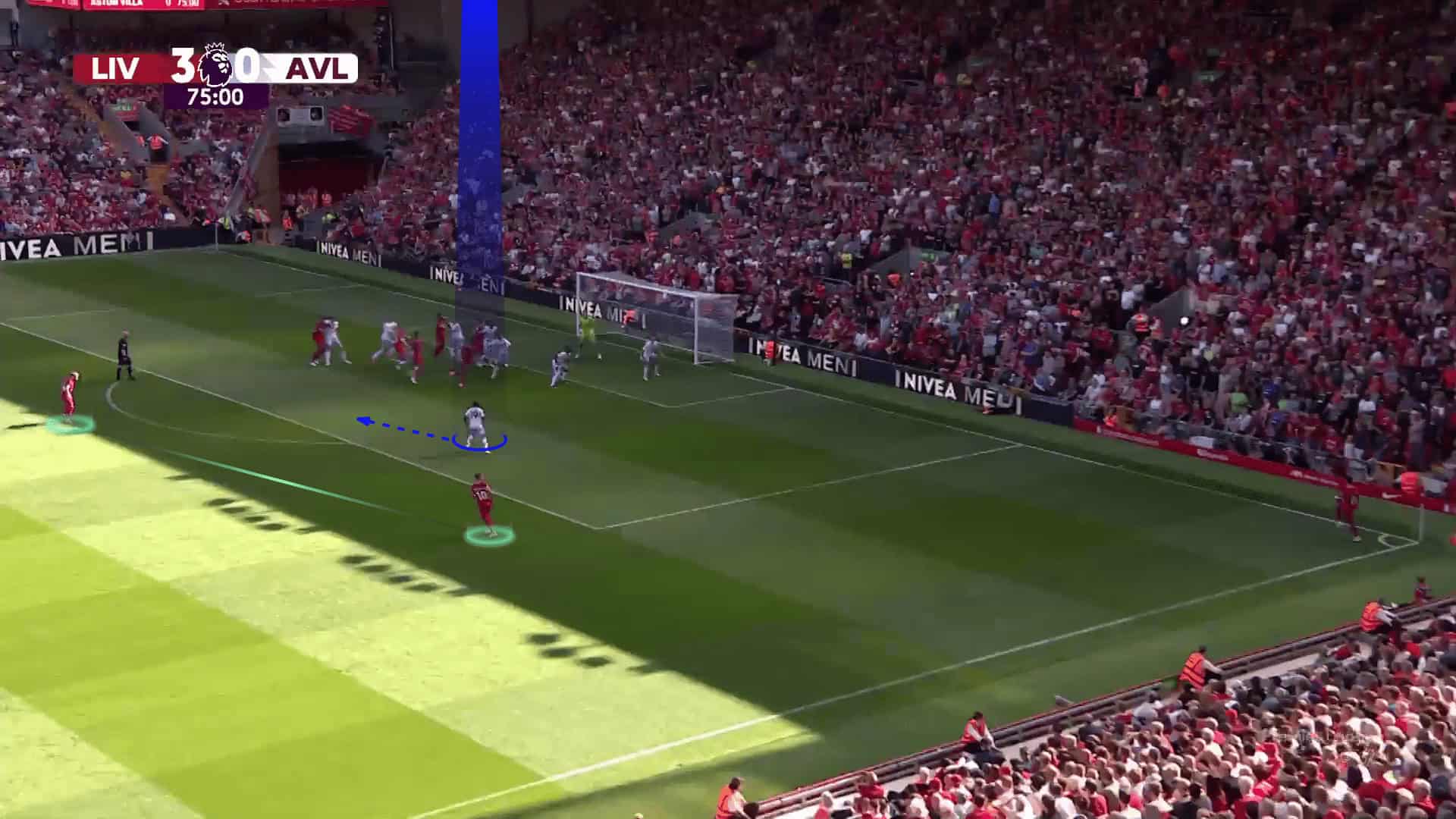
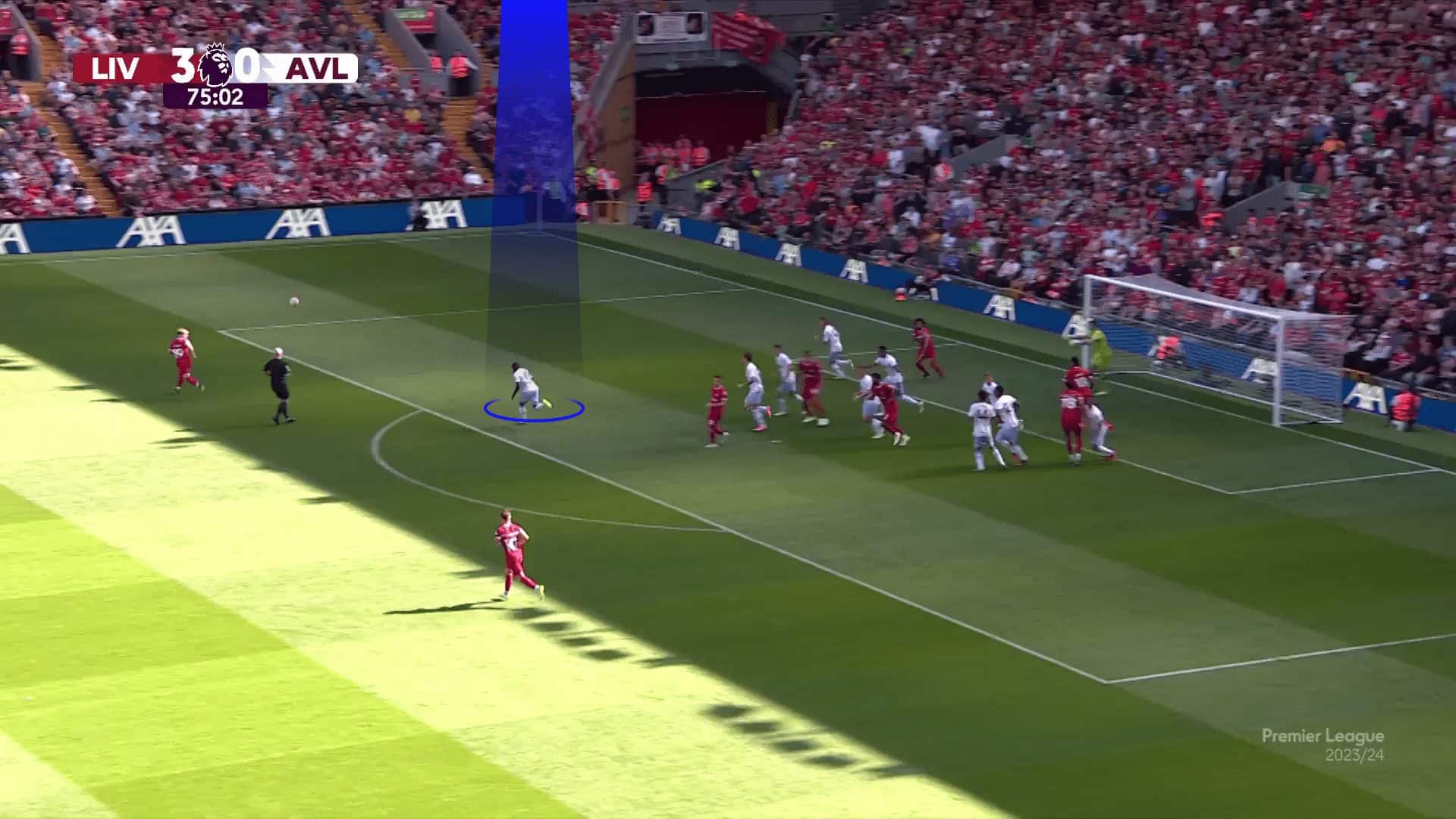
In the same game, you can see below that the defender we speak about starts near the ball at first, but the ball goes unexpectedly to the empty rebound attacker after the clash on the near post in the second photo, so Dominik Szoboszlai kicks the ball directly scoring a goal.
That was an example of an empty rebound area because using only one defender for both short and rebound areas, so let’s see other reasons.
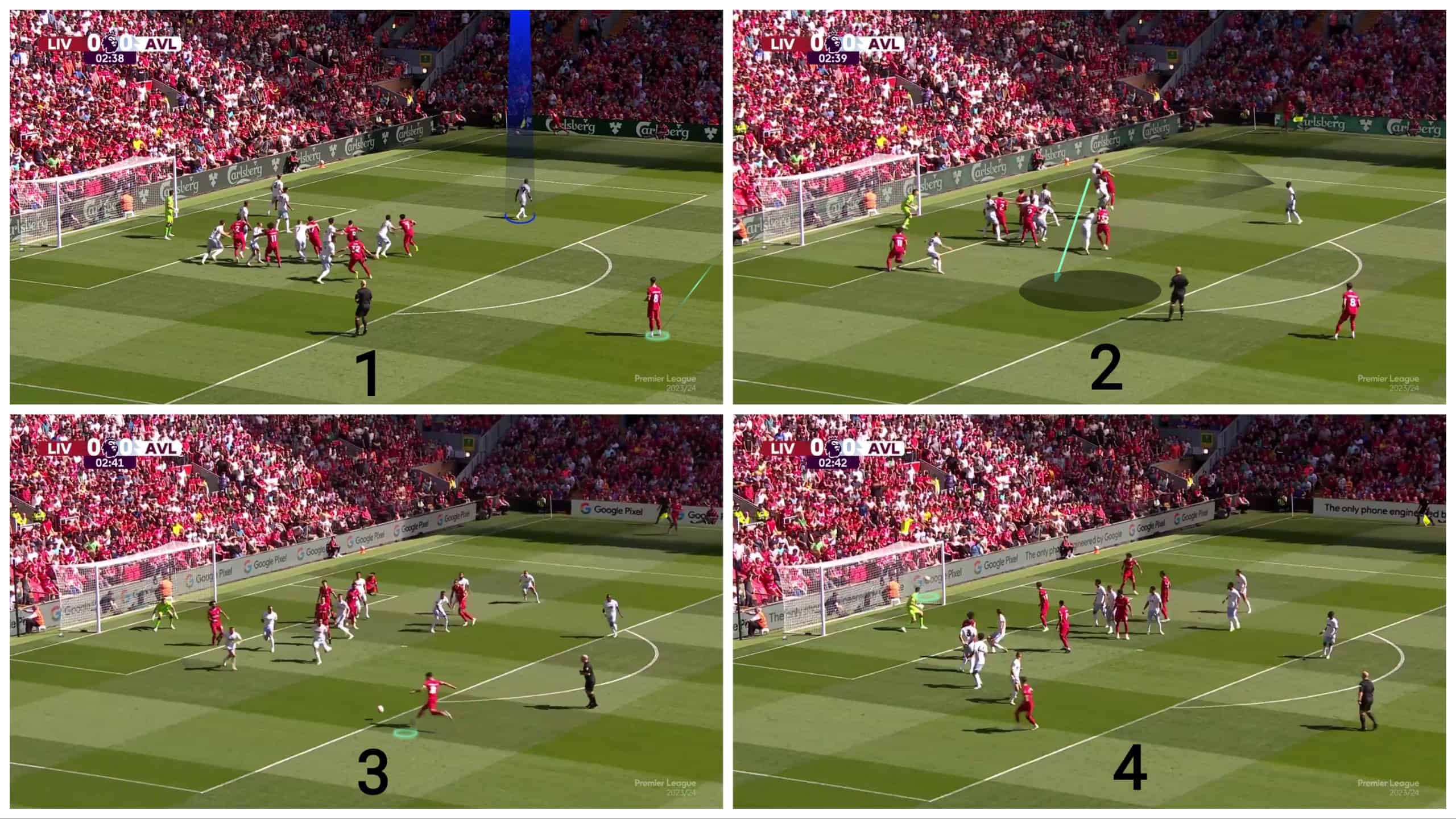
In the case below, Tottenham‘s rebound players start in higher positions to drag all of Brighton’s players in the box, but as the taker moves, they begin to go back to stand in the rebound zone, which makes it empty for them, as shown in the second photo below.
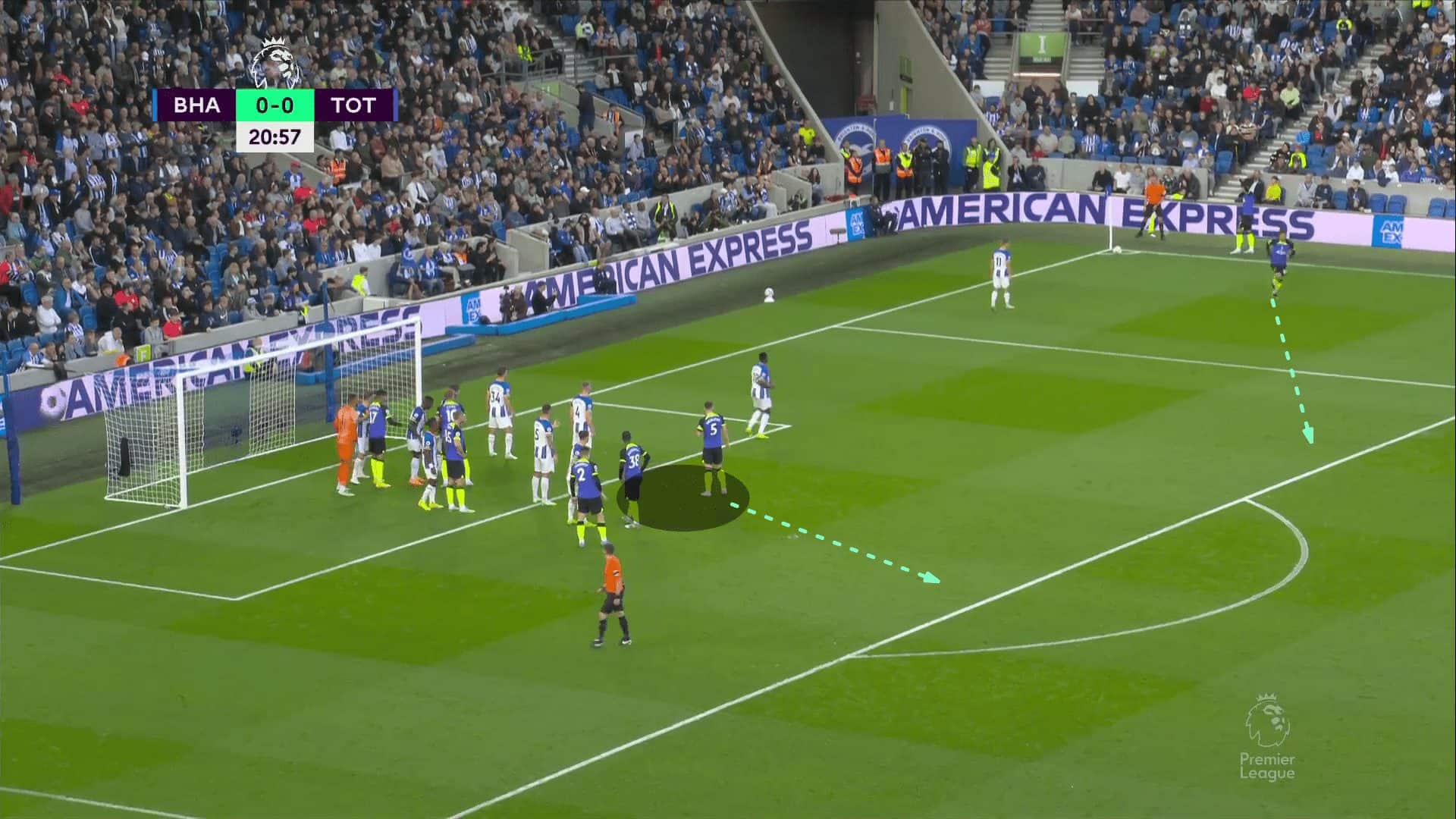
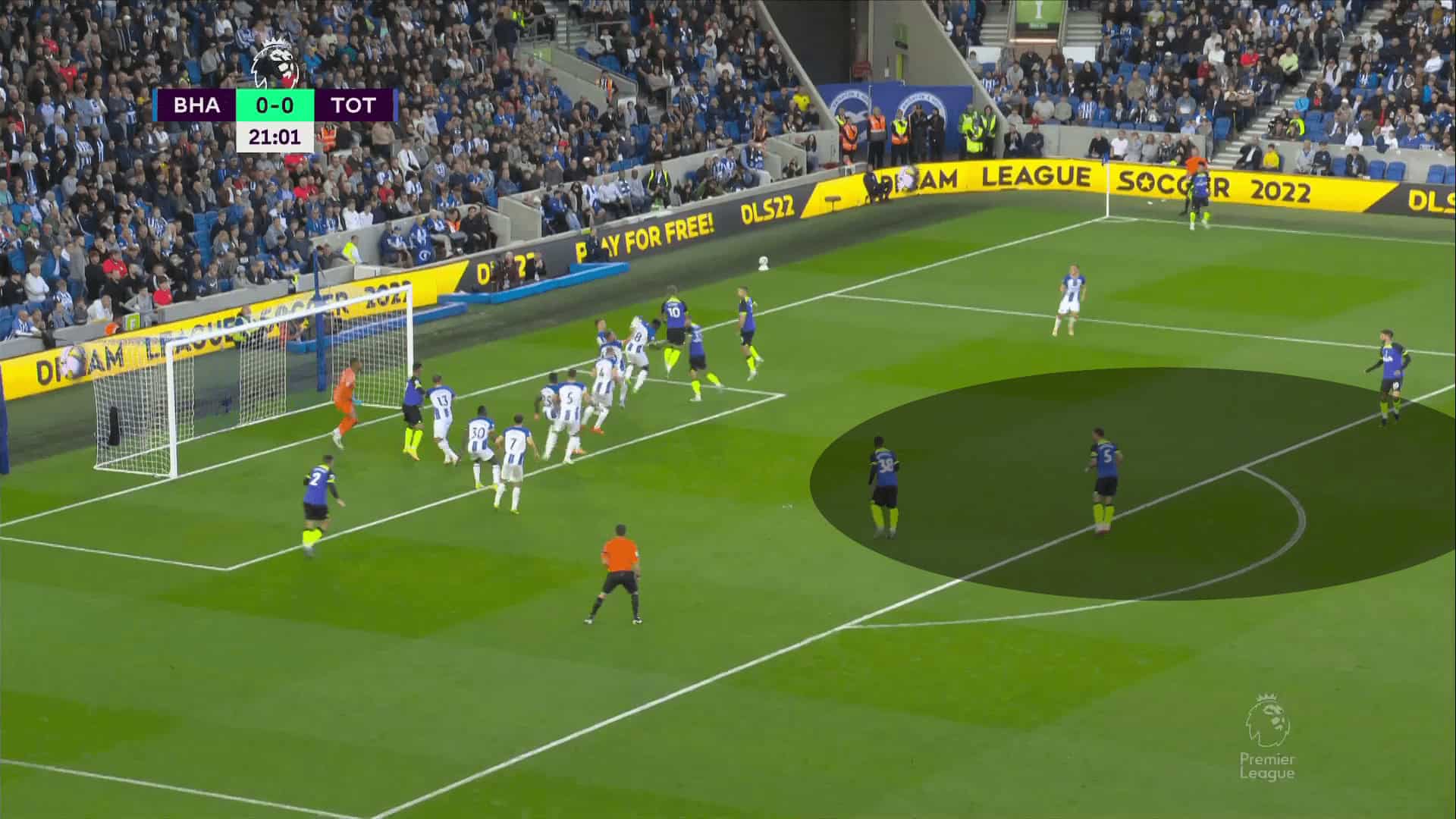
As we mentioned above, the attacking team’s first aim in the second wave is to prevent counterattacks, so some teams put two players in the rebound zone around the box and a player behind them to stay back to cover them if they fail to get the second ball, as shown in the two photos below.
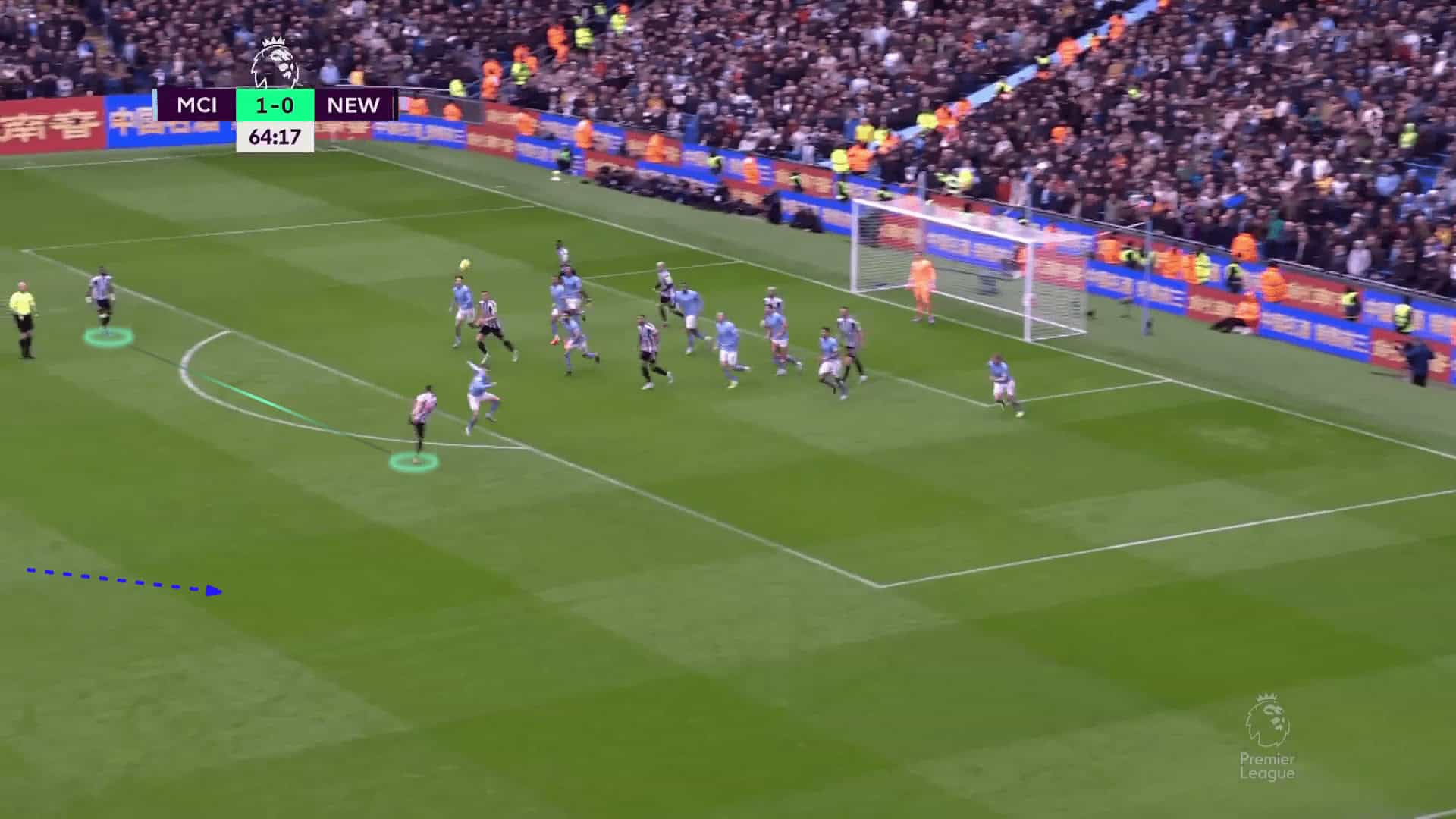
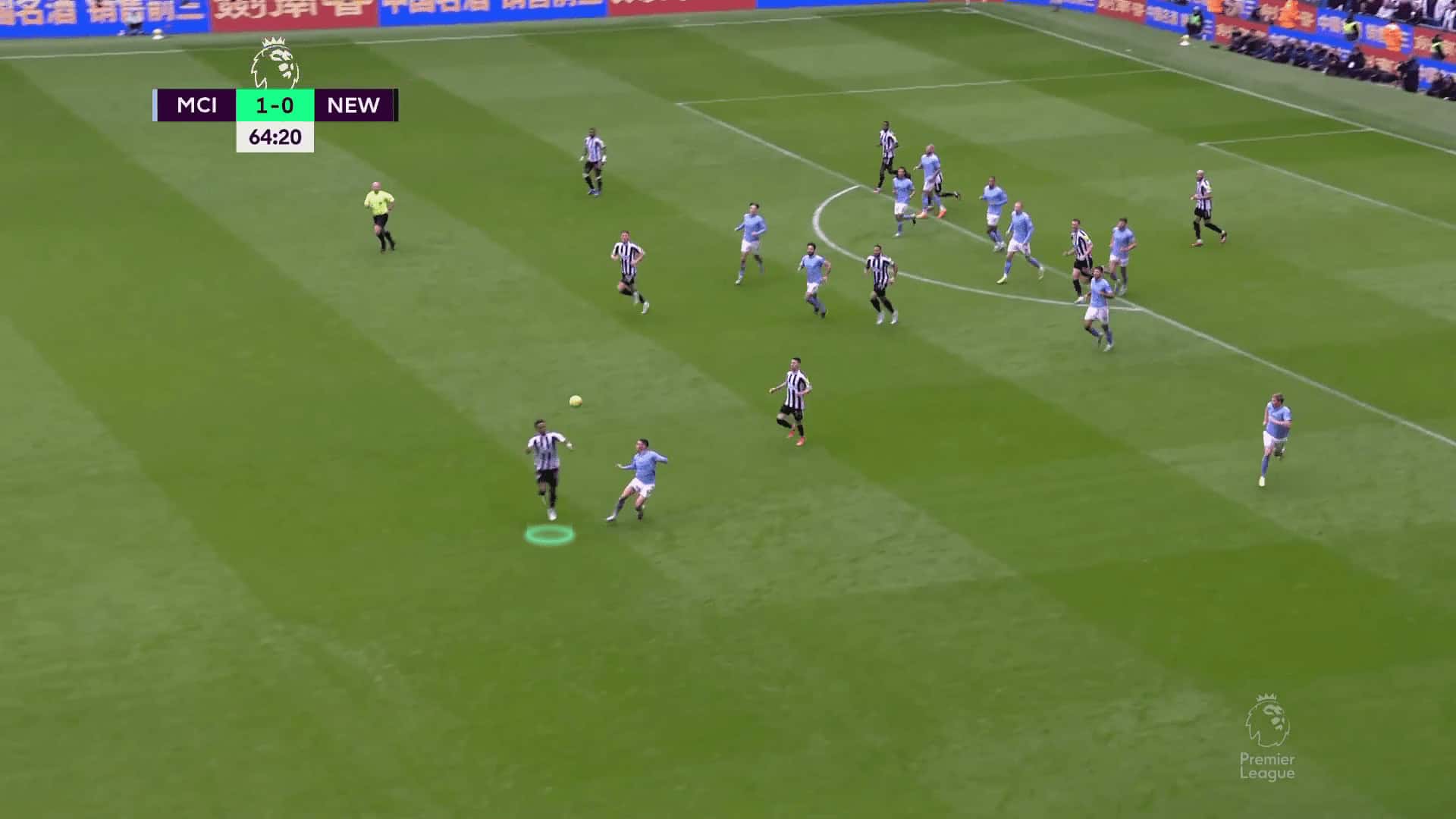
So what should the defending team do to face that? Here, Liverpool, and most of the big teams now, have the solution to fix Mohamed Salah as a rebound zonal defender, and this is one of the advantages of the hybrid defending system because you can see three runners against two markers around the penalty area, but there is no problem because they have zonal players defend the most valuable areas on the edge of the six-yard.
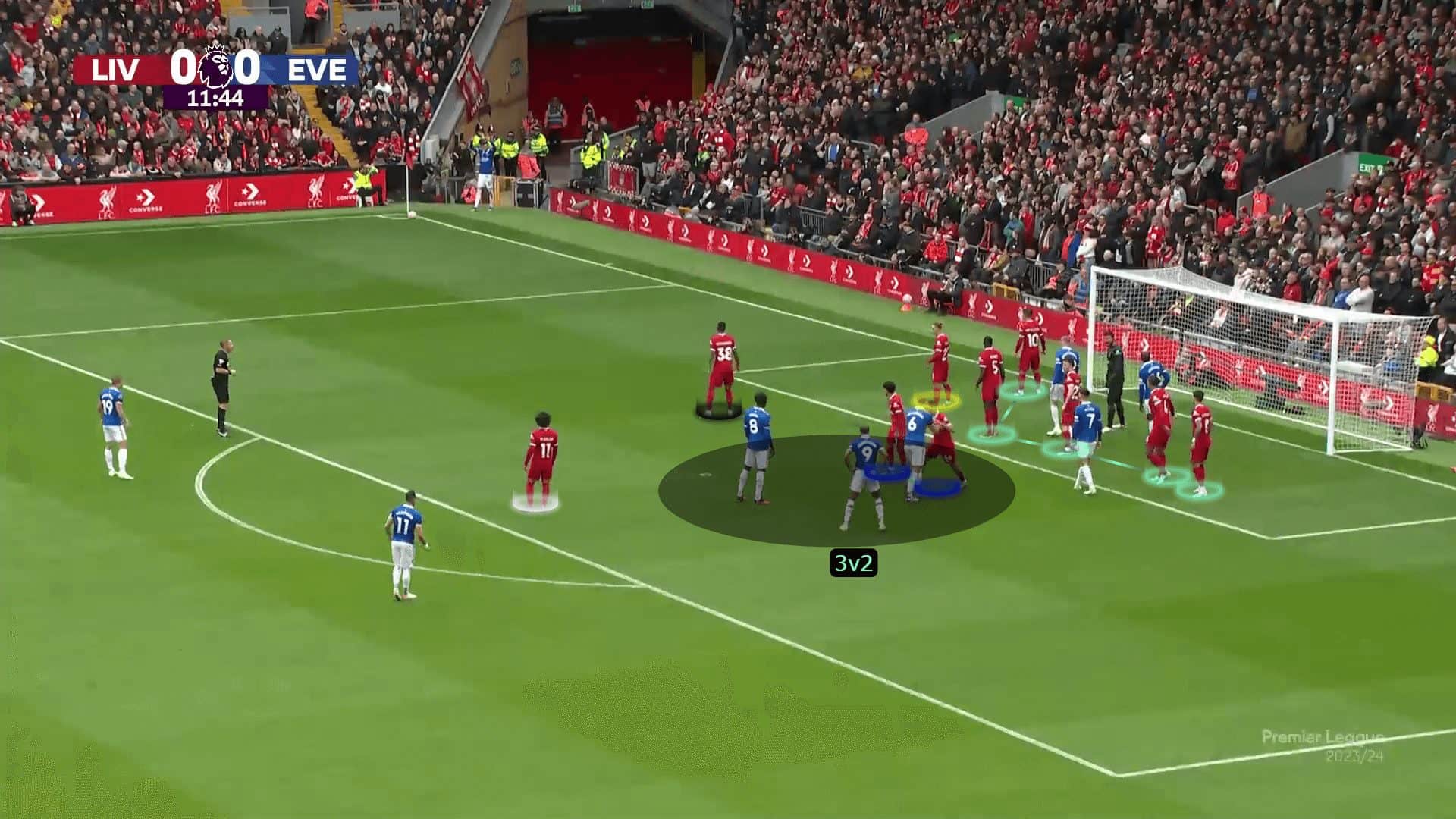
So, Salah can get the second ball easily, as shown below.
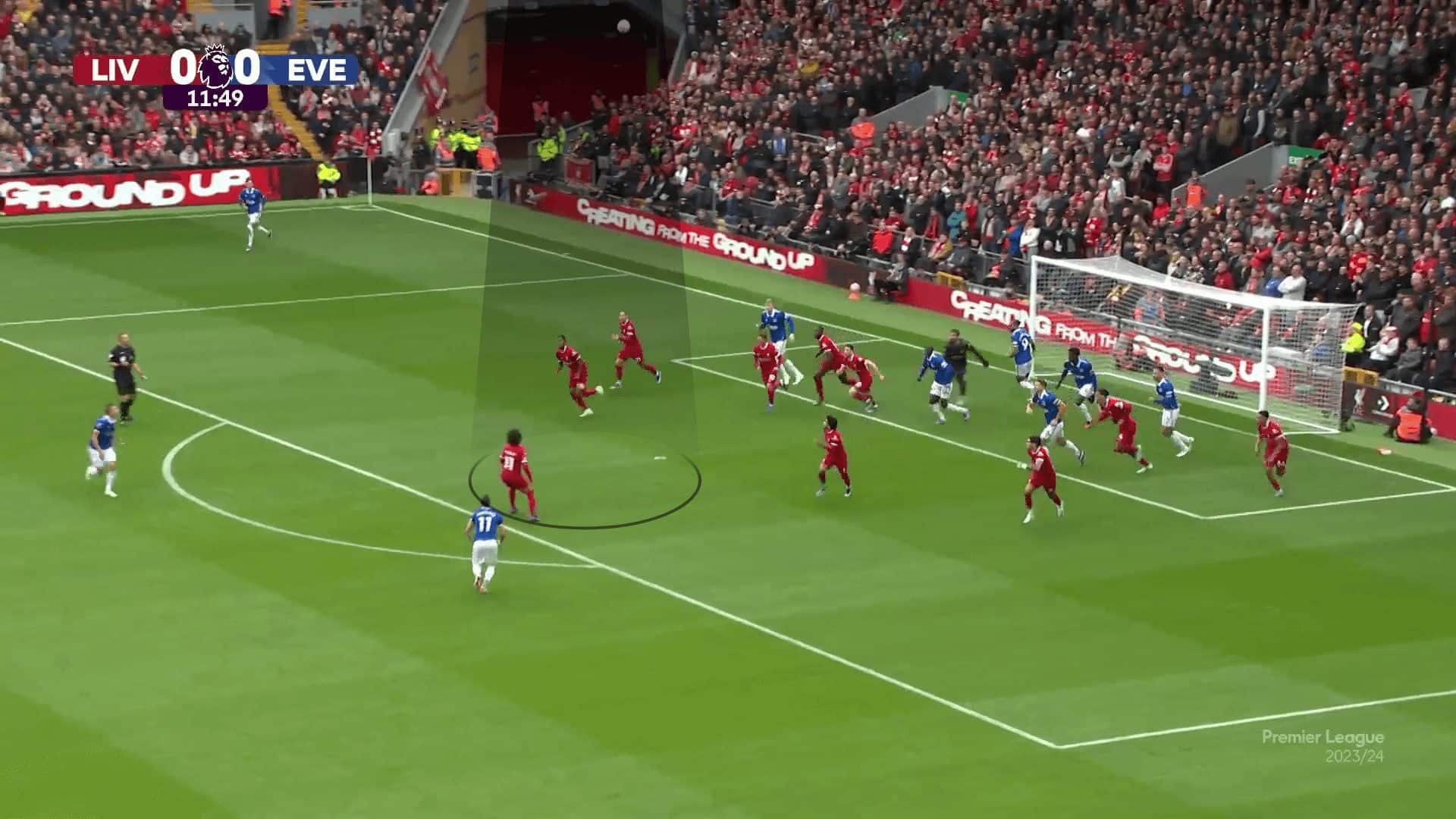
Some of the attacking teams put three players in the rebound zone, making the short option join them waiting for the second ball if there is no attention for a short-corner routine, as shown in the first photo. This 3v1 situation is so tricky, so one of them gets the second ball easily to shoot, as shown in the second photo.
Brentford solved this by asking the short-option defender to join the rebound zone quickly if the corner isn’t played shortly, as shown in the third and fourth photos below.
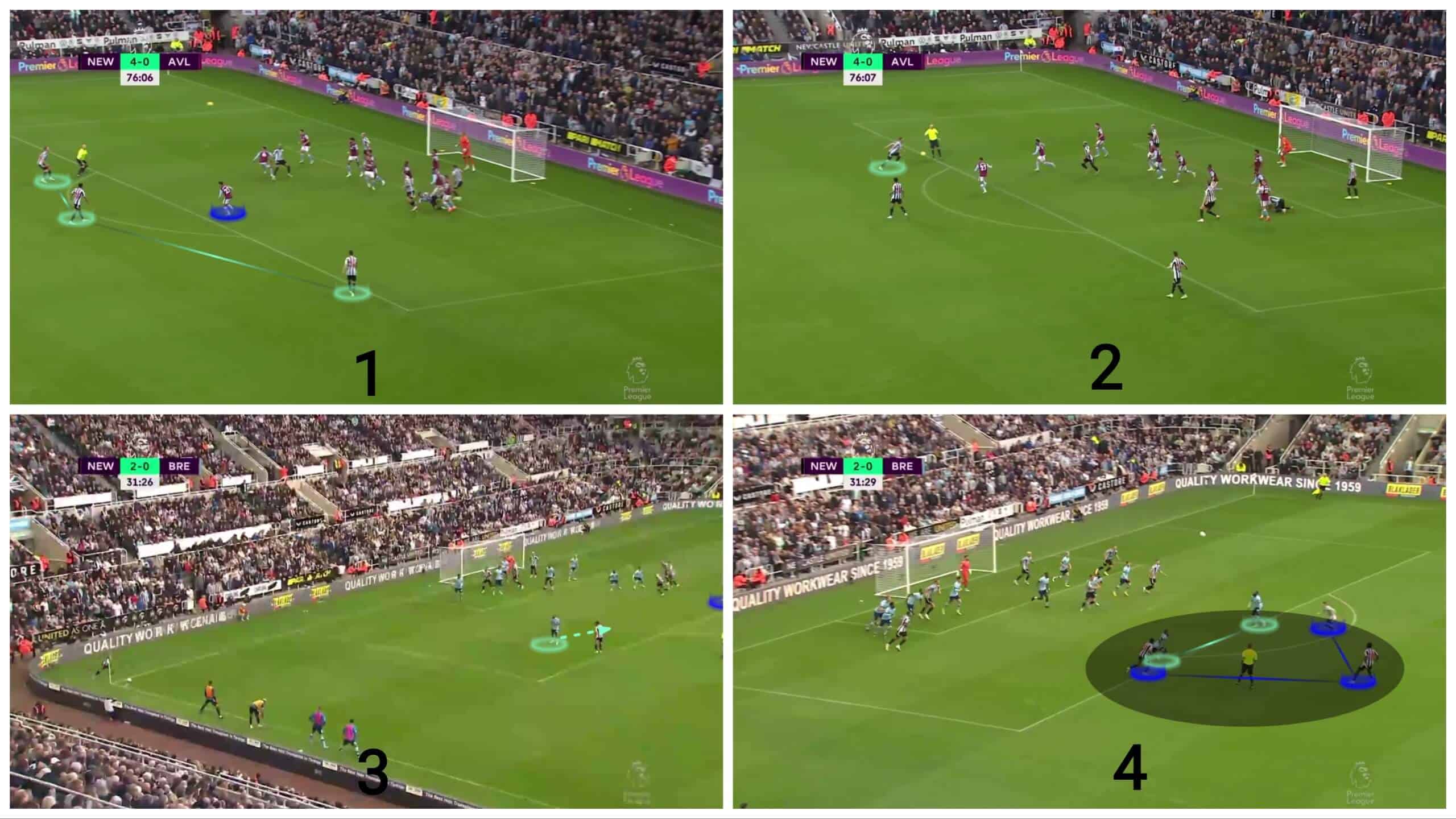
Back to the taker
We have explained above the cases happen if the ball falls around the box ready to be shot, but if it falls in far areas, the attacking and the defending teams have plans and routines for the second wave.
As shown below, we will start with the attacking team’s routines if the ball returns to the flank near the corner. The taker goes back fast to be in an onside position. At the same time, the short option attacker or the right rebound player, depending on the team’s strategy, gets the second pall, passing it to the taker, who crosses the ball to the far post while the attacking team overloads by two players, also putting two players to the second ball.
Most teams target the far post in the second wave because it is so difficult for the defender who is forced to put his face to the ball and his back to the attacker, which makes it difficult for him to track the ball and the opponent at the same time which is called a problem in orientation.
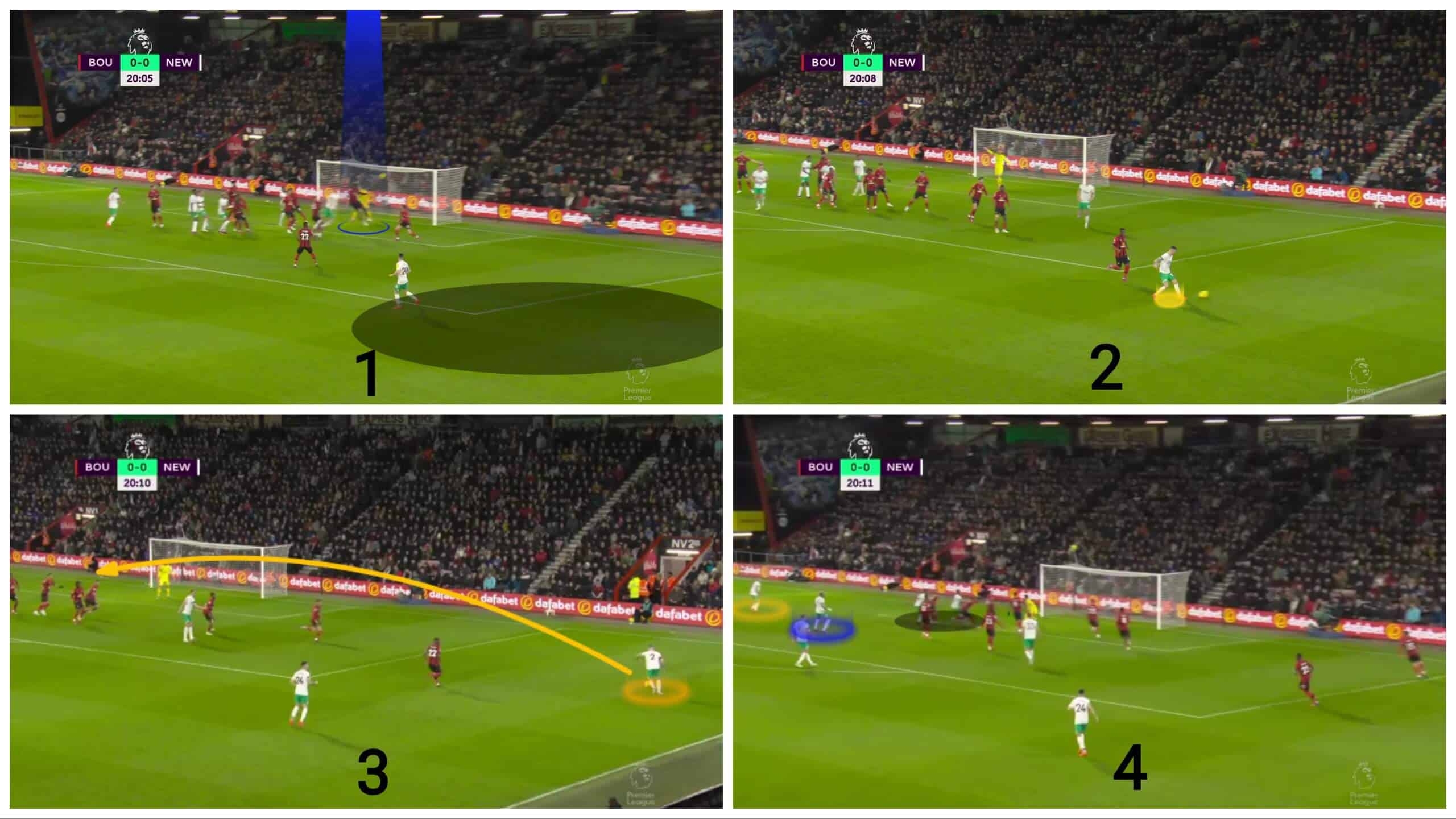
We are still in the same idea of passing to the taker but in a different way. In the first photo, the defence kicks the ball away. Hence, the rebound player runs back to get the second ball, so he passes the ball back to the player who stays back to defend the counterattacks and crosses the ball back to the taker while the defending team goes up, as in the second photo.
In the third photo, the yellow-highlighted player tries to attract the attention of the last defender, preventing him from intercepting the cross to the taker, and then, he receives a cut-back pass from the taker, as shown in the fourth photo.
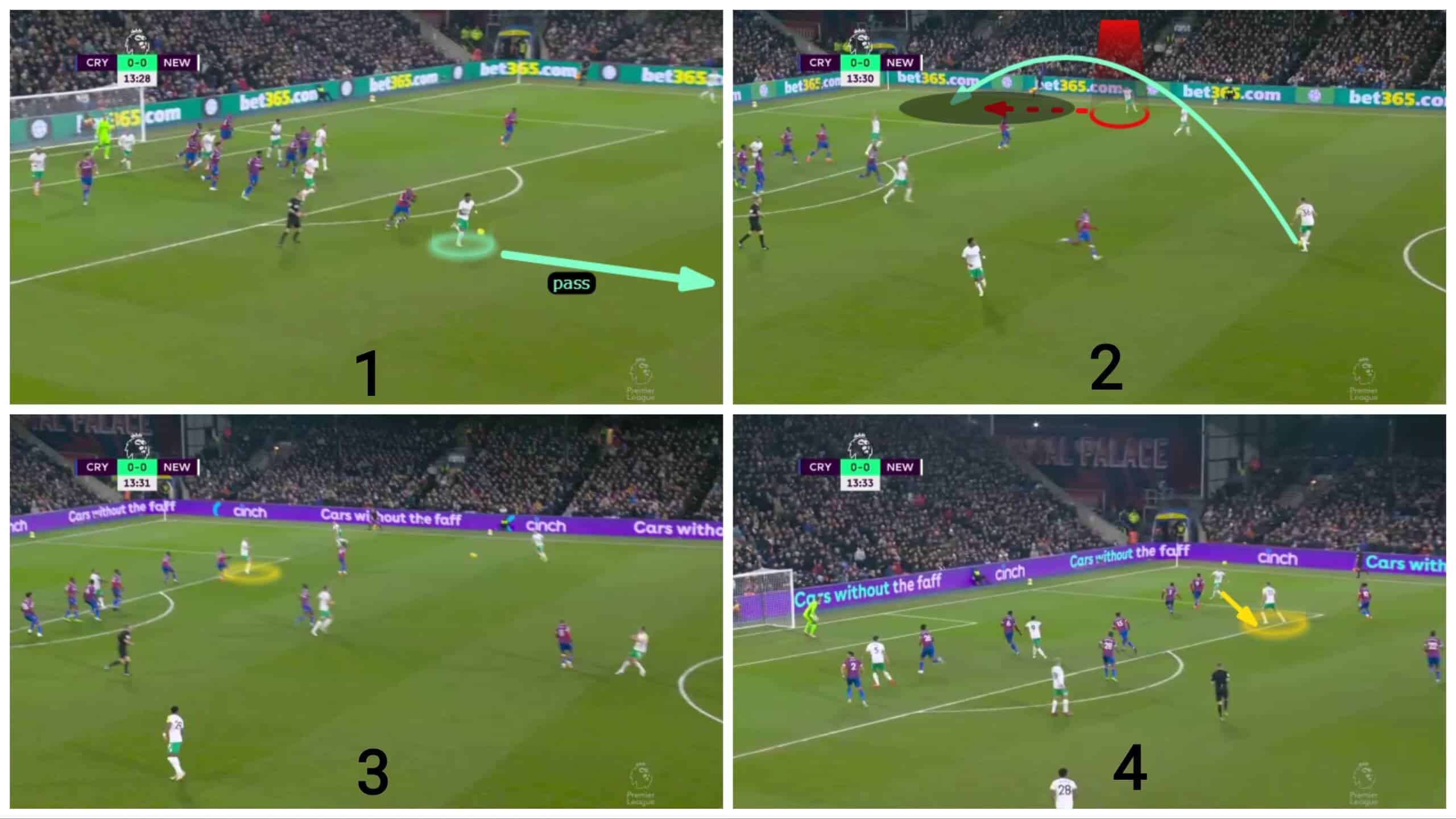
He shoots the ball from a dangerous area, as shown below.
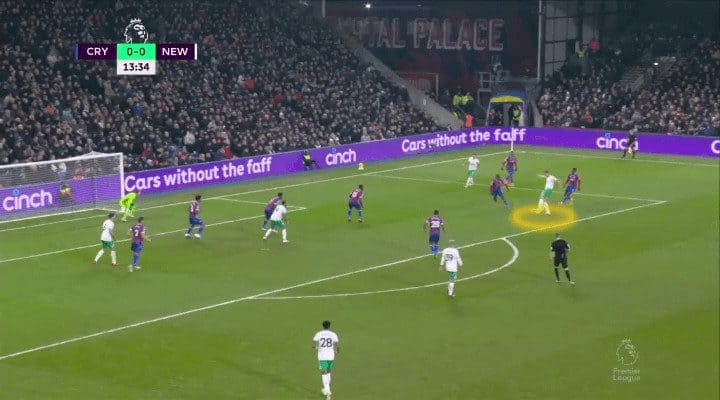
Exploiting reorganising in a line
The biggest problem faces the defending teams is reorganising themselves in a line, when and where to stand, especially if the team defended the corner with a man-marking defending system, then they try to leave a line in the back. That line is a zonal system, so this transformation must be planned well.
In the first photo below, Crystal Palace defends with a man-marking defending system, leaving only two zonal defenders. At the same time, Wilfried Zaha keeps his eyes on Allan Saint-Maximin, who stands in the rebound area, but let’s track two players: Jean-Philippe Mateta, who is the first zonal defender and Jordan Ayew, who is a man-marker.
In the second photo, the ball falls after the rebound area while Zaha chases Saint-Maximin, which is good, meaning that there is no direct shot, but he crosses the ball, and there is a problem.
In the third photo, while the ball is in the air, Crystal Palace’s players are going up in an unorganised system, so you can see Mateta going forward out of the game. Ayew chases Saint-Maximin without a need, leaving few defenders inside the box and beside the number, they are two crucial players in aerial duels.
The line also has no clear strategy, so you can see the last defender keeps marking his marker, leaving this gap in the fourth photo.
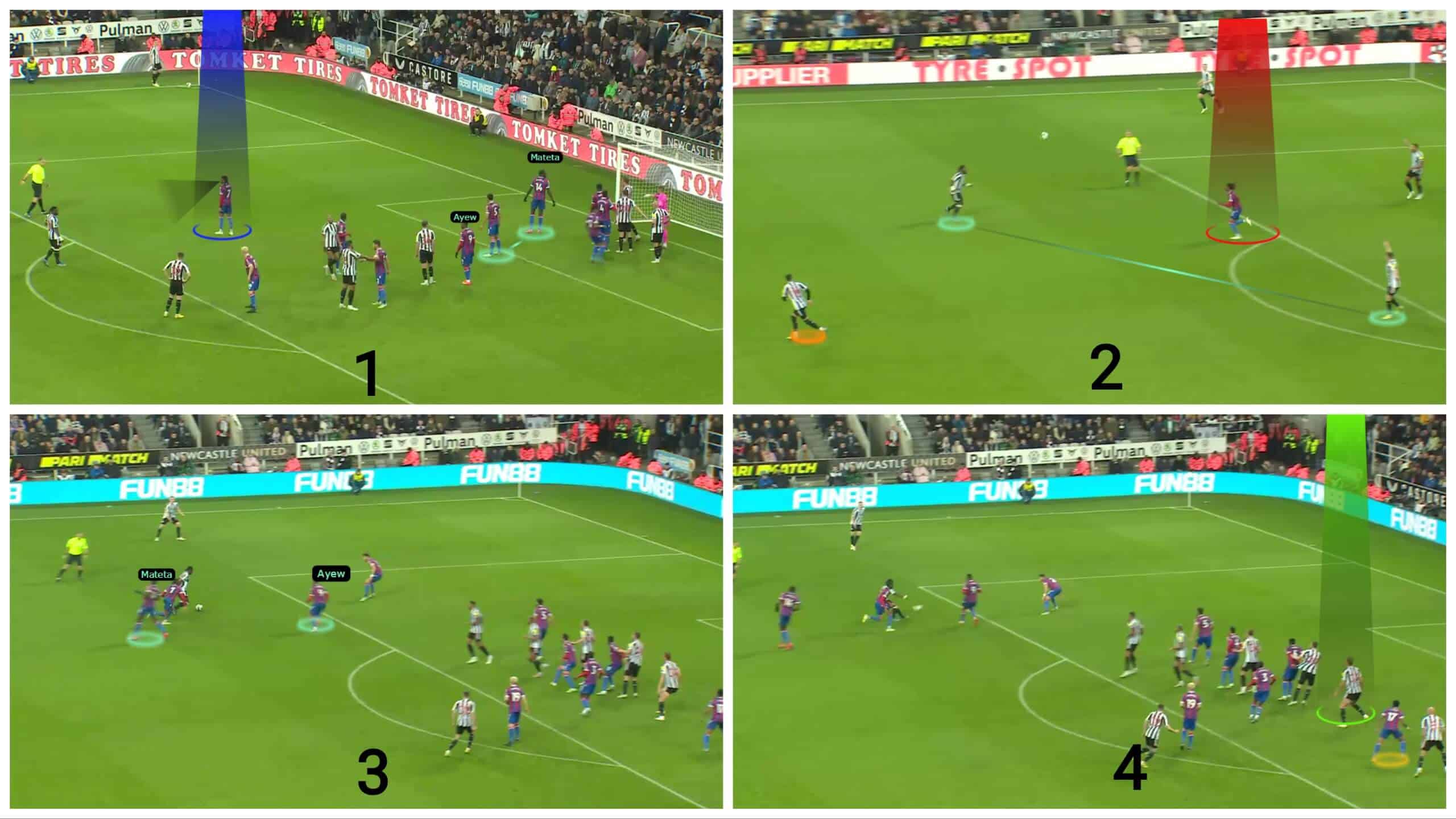
An attacker gets the ball easily in this gap, as shown below.
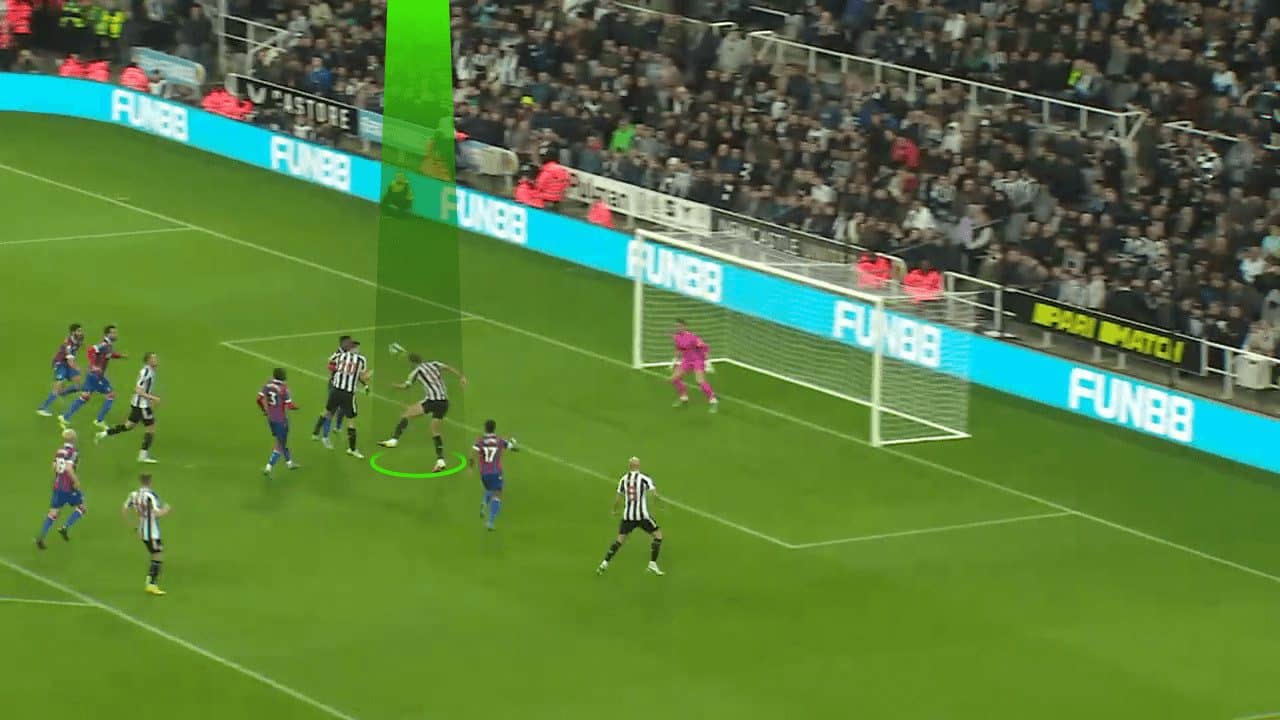
Counter ideas
As we said in the beginning, the second wave’s possibilities are too many and challenging to control, and this is the joy of football, so we have mentioned how to prevent the direct shot. Still, if the ball falls after the rebound zone, the defenders should go up quickly while the attacking rebound players give their back chasing the ball, as shown below.
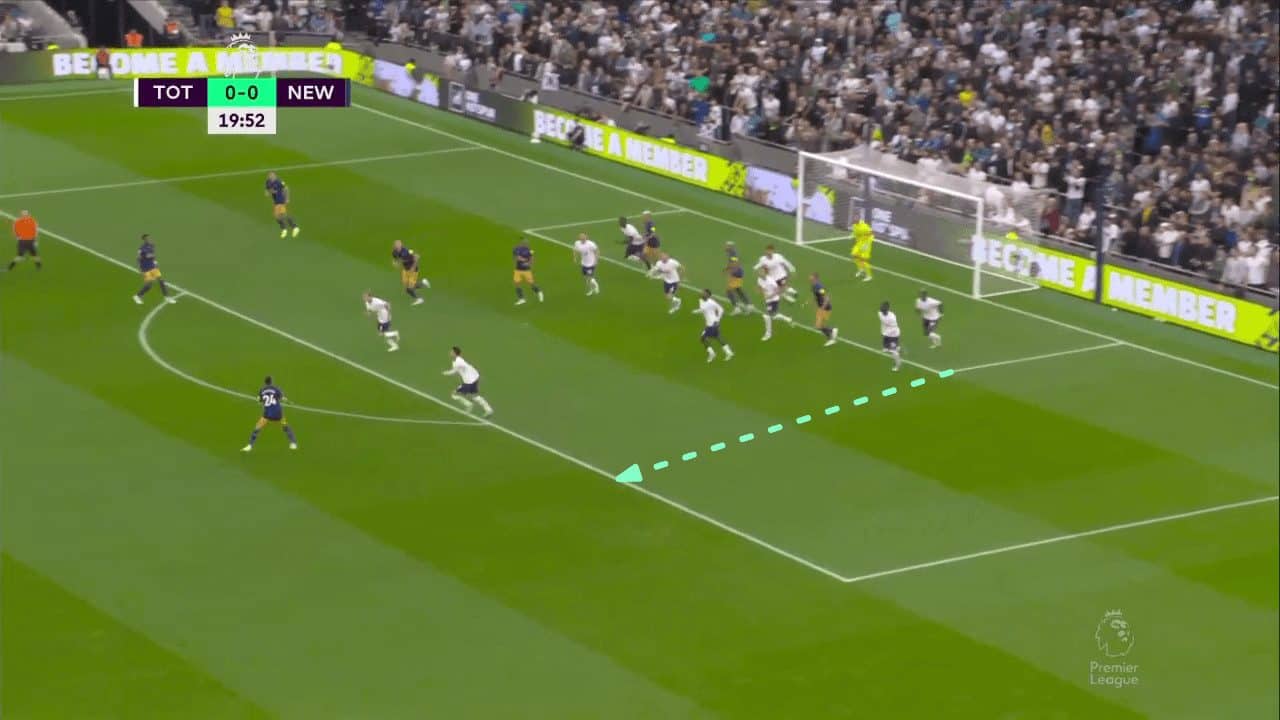
The rebound defender chases the ball aggressively when the attacking team tries to get the ball, so when the rebound attacker returns, he finds him, as shown below.
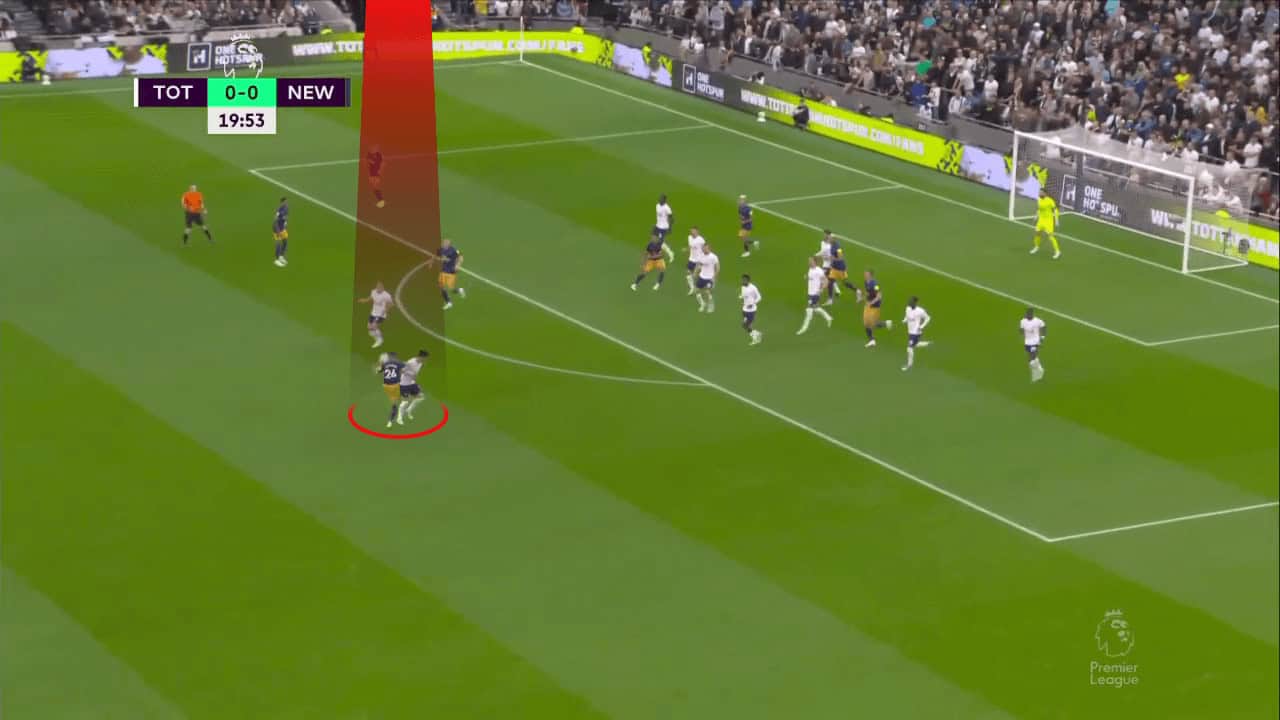
But when the attacking team gets the ball facing the goal, the defending team should stop going up, making sure that the line is well organised in the same line without gaps defending the goal mouth, as shown in the first photo, so when the opponent targets the far post, he can’t hurt directly, so he passes inside the box which is a better possibility for the defending team giving them more time, as shown in the second and third photos.
In the fourth photo, Manchester United have another solution to be patient, leaving seven players in the line securing the far post and the area after it, leaving narrow spaces between them.
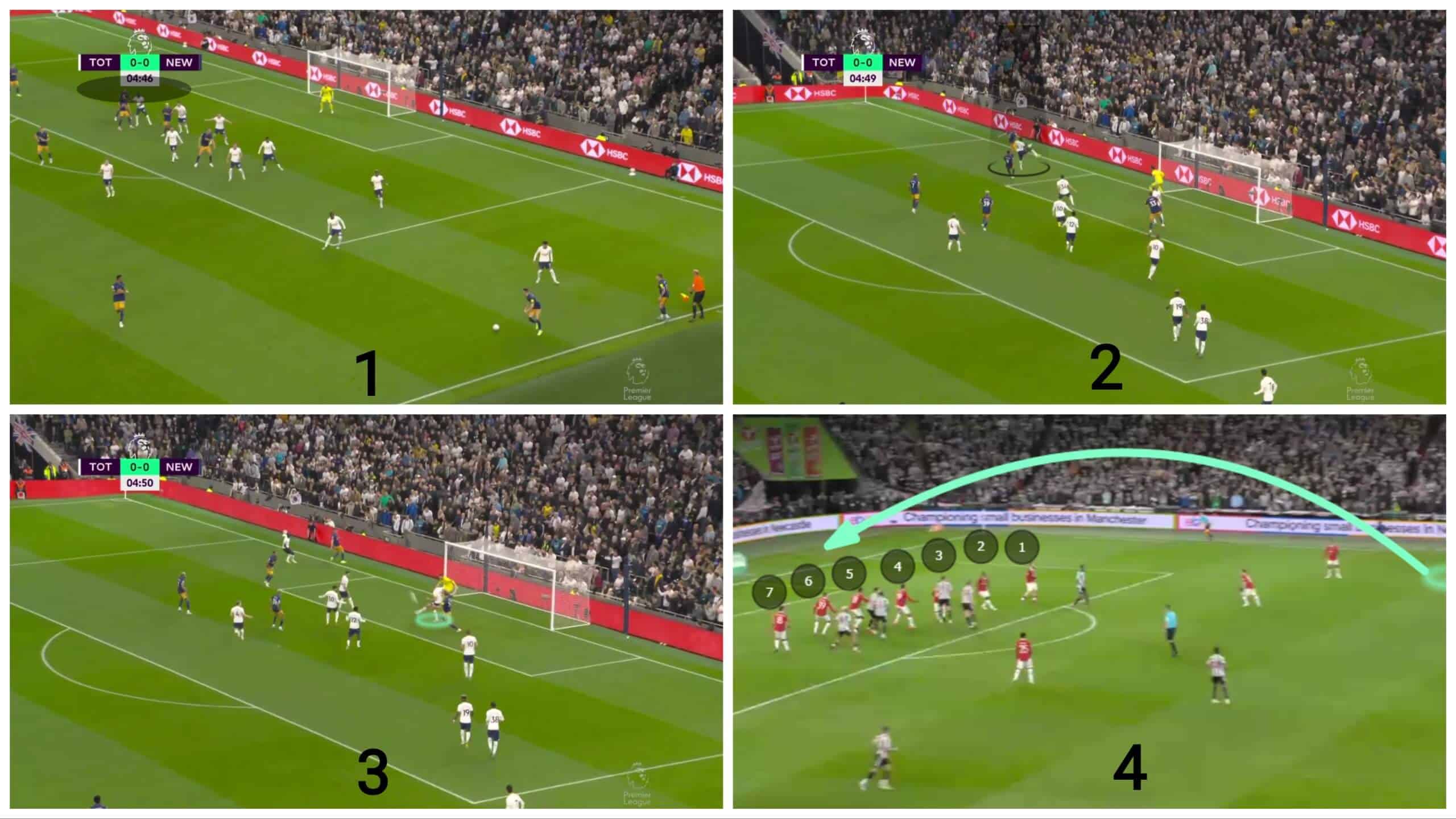
Conclusion
In this analysis, we have delivered a set-piece analysis of the second wave at corners for the attacking team, explaining also the counter and defending ideas that defending teams can do to avoid the threat of the second wave at corners.

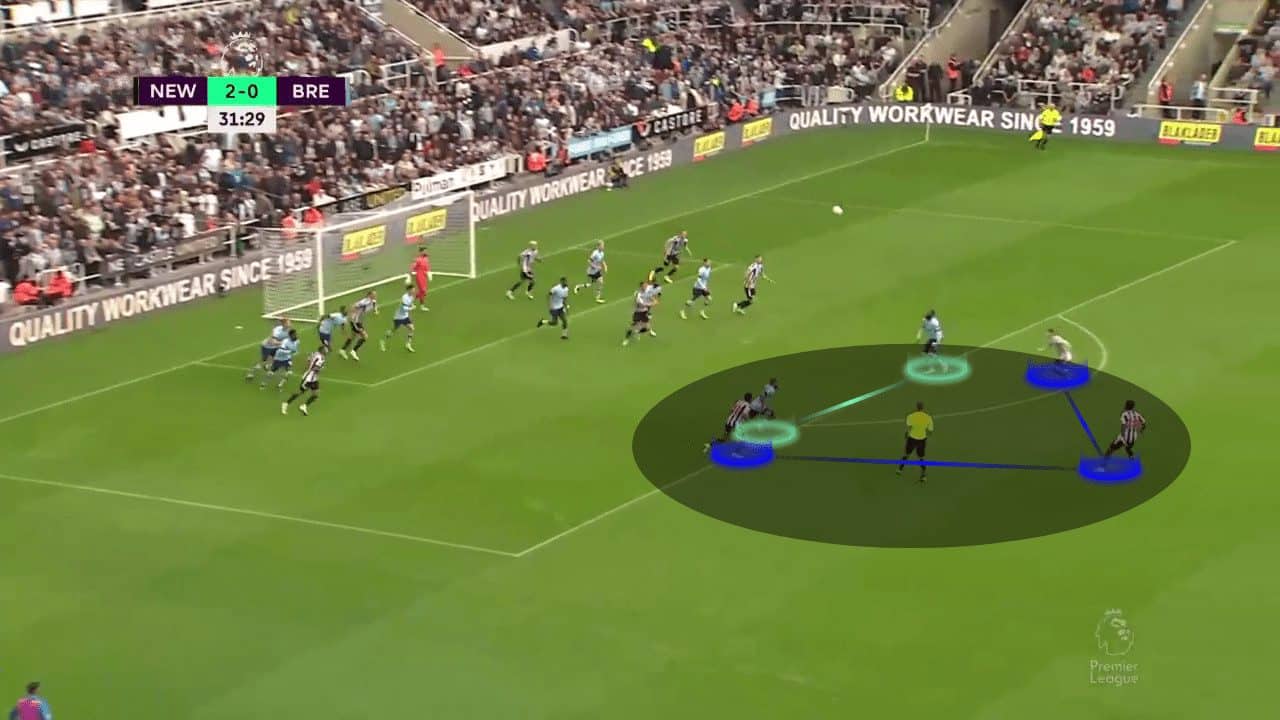




Comments